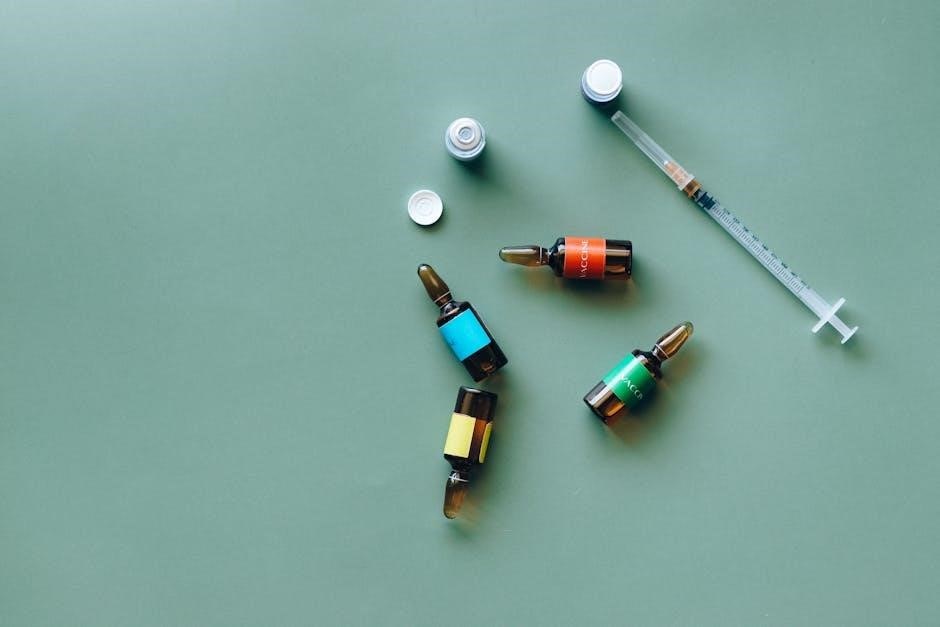Vial of Life: A Comprehensive Guide
The Vial of Life program is a simple yet effective method for storing crucial medical information. It ensures first responders have immediate access to your health details during emergencies. This initiative has aided numerous individuals, particularly those with chronic conditions or living alone, saving lives.
What is the Vial of Life?
The Vial of Life is a compact kit designed to provide first responders with immediate access to your vital medical information during an emergency. This simple yet potentially life-saving tool typically includes a standardized form that you fill out with details about your medical history, current medications, allergies, emergency contacts, and other pertinent health information. The kit often comes with a bright, easily recognizable sticker or decal that is placed on your refrigerator door or another prominent location in your home, alerting emergency personnel to the presence of the Vial of Life.
The core idea behind the Vial of Life is to speak for you when you are unable to do so. Whether you are unconscious, disoriented, or simply unable to communicate effectively, the Vial of Life ensures that paramedics and other first responders have the information they need to provide you with the best possible care. It bridges the gap in communication during critical moments, allowing for quicker and more informed decisions regarding your treatment. This program is particularly beneficial for seniors, individuals with chronic illnesses, and those who live alone, as it provides an added layer of security and peace of mind.
Key Components of a Vial of Life Kit
A standard Vial of Life kit typically consists of several essential components, each playing a crucial role in ensuring the effectiveness of the system. The most important element is the medical information form, which is a pre-printed document designed to capture your key health details. This form usually includes sections for listing current medications, allergies (especially to medications), past medical history, existing medical conditions, emergency contact information, and the name and contact details of your primary physician. Some forms may also include space for special instructions, such as health directives or specific wishes regarding treatment.
Another key component is a clear plastic bag or container, often a zip-lock bag, designed to protect the medical information form and keep it organized. This bag helps prevent the form from getting damaged or soiled, ensuring that it remains legible for emergency responders. Finally, the kit includes a brightly colored decal or sticker, prominently displaying the “Vial of Life” name or logo. This sticker is placed on the outside of your refrigerator or another easily accessible location, alerting first responders to the presence of the kit and its vital contents. Some kits may also include additional stickers for placement on your front door or window, further enhancing visibility.
Filling Out the Vial of Life Form
Completing the Vial of Life form accurately and thoroughly is paramount to the kit’s effectiveness. Begin by using a pen with legible ink or a pencil to fill out all sections of the form, providing as much detail as possible. In the “Medications” section, list all current medications, including dosages and frequency of administration. Be precise about any allergies, particularly drug allergies, noting the specific reaction experienced. Include a concise medical history, mentioning significant past illnesses, surgeries, and hospitalizations. Clearly state any existing medical conditions, such as diabetes, heart disease, or asthma.
Provide accurate emergency contact information, including the names and phone numbers of individuals who should be notified in case of an emergency. Ensure that your primary physician’s name and contact details are readily available. If you have any specific medical instructions or directives, such as a Do Not Resuscitate (DNR) order or advance care plan, clearly document them on the form. Remember, this form speaks for you when you cannot, so accuracy and completeness are key. If needed, seek assistance from your doctor or a trusted family member to ensure all information is correct and up-to-date.
Where to Store Your Vial of Life
Selecting the appropriate location for your Vial of Life is crucial to ensure it can be easily located by first responders during an emergency. The most common and recommended place is inside the refrigerator door. This location is widely recognized by emergency personnel, making it their first point of reference when searching for medical information. Ensure the vial is placed in a clear, easily accessible spot within the refrigerator, avoiding areas that might be cluttered or obscured.
Alternatively, if storing the vial in the refrigerator is not feasible, consider another readily accessible location such as a kitchen cabinet near the refrigerator or a designated spot in the pantry. Whichever location you choose, clearly mark it with the provided Vial of Life decal, prominently displayed on the refrigerator door or the chosen cabinet. This decal serves as a visual cue, alerting emergency responders to the presence of the Vial of Life and its location within your home. Consistency is key; always store the vial in the designated spot to avoid confusion during a crisis.
Importance of Updating Information Regularly
Maintaining an up-to-date Vial of Life is paramount to its effectiveness in an emergency. Medical information can change rapidly, with new medications, allergies, or health conditions emerging. Outdated information could lead to incorrect treatment or adverse reactions, potentially jeopardizing your health. Therefore, it’s essential to review and update your Vial of Life form regularly.
Ideally, schedule a review at least every three to six months. However, any significant health changes necessitate an immediate update. This includes new diagnoses, medication adjustments, changes in allergies, or updates to emergency contact information. Use a pencil to fill out the form, allowing for easy modifications. Consider setting reminders on your phone or calendar to ensure timely reviews. Maintaining current information ensures first responders have the most accurate details to provide the best possible care when you need it most. Regular updates are a small effort that can make a life-saving difference.

How the Vial of Life Works in Emergencies
The Vial of Life is designed to provide first responders with immediate access to your critical medical information when you are unable to communicate. The process begins with paramedics noticing the Vial of Life decal on your front door or refrigerator. This sticker alerts them to the presence of the vial containing your medical form.

Upon locating the vial, emergency personnel will review the information, including your medical history, current medications, allergies, and emergency contacts. This allows them to make informed decisions regarding your treatment, even if you are unconscious or unable to speak. The information assists in administering appropriate medications, avoiding allergic reactions, and contacting your family or physician. Having this data readily available saves valuable time and can significantly improve the outcome of the emergency situation. It’s a simple yet effective system designed to speak for you when you cannot.

Difference Between Vial of Life and DNR
It’s crucial to understand that a Vial of Life and a DNR (Do Not Resuscitate) order serve entirely different purposes. The Vial of Life provides emergency responders with vital medical information to assist in treatment. It outlines your medical history, allergies, medications, and emergency contacts, enabling them to make informed decisions about your care. In contrast, a DNR is a legal document stating that you do not wish to be revived if your heart stops or you stop breathing.
A DNR is a physician-signed order and must be presented to emergency personnel to be valid. It expresses your wishes regarding resuscitation, whereas the Vial of Life provides information for medical intervention. The Vial of Life aids in providing the best possible care, while a DNR dictates whether or not resuscitation should be attempted. Confusing the two could have severe consequences, highlighting the importance of understanding their distinct roles in emergency situations.
Benefits of the Vial of Life Program
The Vial of Life program offers numerous benefits, particularly for seniors, those living alone, and individuals with chronic illnesses. Primarily, it provides first responders with immediate access to critical medical information, ensuring faster and more effective treatment during emergencies. This can be life-saving when a patient is unable to communicate due to a medical condition or unconsciousness.
Having readily available medical details, including allergies, medications, and medical history, minimizes the risk of adverse reactions or incorrect treatments. The program also reduces the time needed for emergency personnel to gather essential information, allowing them to focus on providing immediate care. Furthermore, it provides peace of mind to participants and their families, knowing that crucial health information is easily accessible in case of an emergency. The Vial of Life is a simple yet powerful tool that enhances the quality and speed of emergency medical care, potentially saving lives and improving patient outcomes;
How to Obtain a Vial of Life Kit
Obtaining a Vial of Life kit is typically a straightforward process, with several avenues available depending on your location. Many local fire departments, EMS agencies, and hospitals offer free Vial of Life kits to residents as a community service. Contacting these organizations directly is a good starting point to inquire about availability.
Senior centers and community health organizations also frequently distribute these kits during health fairs or outreach programs. Some pharmacies may carry Vial of Life kits for purchase or offer them as part of a health promotion initiative. Additionally, many organizations provide downloadable versions of the Vial of Life form and instructions online, allowing individuals to create their own kits using a plastic bag or container. Online searches for “Vial of Life kit” combined with your location can yield valuable information on local distribution points. Remember to check with local resources first, as availability can vary.
Privacy Considerations and the Vial of Life

When participating in the Vial of Life program, privacy is a crucial consideration. The kit contains sensitive medical information, including medications, allergies, and medical history, making it essential to understand how this data is handled and protected. While the primary goal is to provide first responders with necessary information for emergency care, it’s important to be aware of privacy safeguards.
Most Vial of Life programs emphasize that the information is used solely for emergency medical purposes. However, participants should be mindful of who has access to their home and, consequently, the Vial. Consider the security of your residence and the potential for unauthorized access. Some programs may offer online storage options for medical information, which could present different privacy considerations related to data security and access controls. Before participating, inquire about the program’s privacy policy and data protection measures. You have the right to know how your information will be used and protected.



